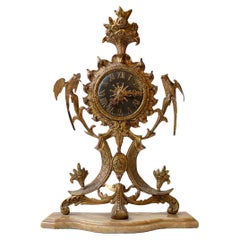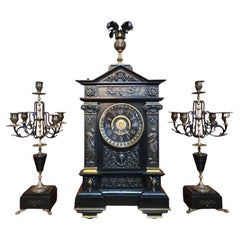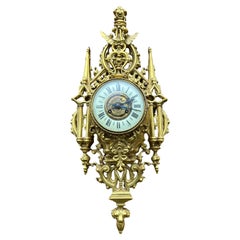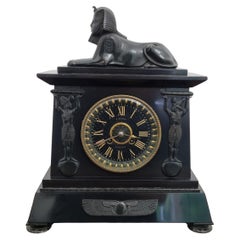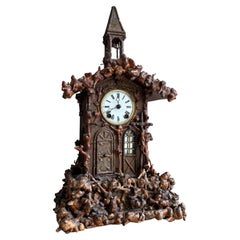Revival Clocks
Early 20th Century European Revival Clocks
Marble, Gold Plate, Brass
Mid-19th Century French Antique Revival Clocks
Slate, Brass, Bronze
Late 19th Century French Antique Revival Clocks
Brass, Bronze
19th Century British Antique Revival Clocks
Belgian Black Marble, Slate, Bronze
19th Century German Antique Revival Clocks
Brass, Iron
Mid-19th Century French Antique Revival Clocks
Marble, Bronze
Early 19th Century French Antique Revival Clocks
Brass, Bronze
Mid-19th Century English Antique Revival Clocks
Oak
1920s French Vintage Revival Clocks
Marble, Slate, Bronze
Early 20th Century Spanish Revival Clocks
Steel, Iron
Early 20th Century French Revival Clocks
Brass, Enamel, Wrought Iron
Early 20th Century French Revival Clocks
Brass
19th Century English Antique Revival Clocks
Metal
Late 19th Century American Antique Revival Clocks
Marble
19th Century French Antique Revival Clocks
Marble
Mid-19th Century Scottish Antique Revival Clocks
Bronze
1980s Italian Vintage Revival Clocks
Silver
Late 19th Century French Antique Revival Clocks
Bronze
Late 19th Century European Antique Revival Clocks
Marble, Bronze
Mid-20th Century German Revival Clocks
Steel
Mid-19th Century French Antique Revival Clocks
Bronze
1960s Swiss Vintage Revival Clocks
Brass
19th Century European Antique Revival Clocks
Metal, Other
Early 19th Century French Antique Revival Clocks
Bronze
19th Century French Antique Revival Clocks
Enamel, Ormolu
Early 20th Century French Revival Clocks
Belgian Black Marble
1870s French Antique Revival Clocks
Marble, Bronze
Early 2000s Swiss Revival Clocks
Onyx, Gold
19th Century English Antique Revival Clocks
Brass, Bronze, Steel
Late 19th Century French Antique Revival Clocks
Ormolu, Bronze, Enamel
19th Century Unknown Antique Revival Clocks
Marble, Metal
Late 19th Century French Antique Revival Clocks
Ormolu, Bronze, Enamel
19th Century French Antique Revival Clocks
Metal, Enamel, Ormolu
19th Century Dutch Antique Revival Clocks
Walnut
Late 19th Century French Antique Revival Clocks
Bronze
1880s French Antique Revival Clocks
Marble, Bronze, Ormolu
19th Century European Antique Revival Clocks
Onyx, Bronze, Ormolu
Mid-19th Century French Antique Revival Clocks
Brass, Enamel, Ormolu, Bronze
Mid-19th Century British Antique Revival Clocks
Marble, Belgian Black Marble
19th Century French Antique Revival Clocks
Marble, Bronze
19th Century French Antique Revival Clocks
Ormolu
Early 19th Century French Antique Revival Clocks
Porcelain
Early 1900s French Antique Revival Clocks
Onyx, Marble, Bronze
Late 19th Century French Antique Revival Clocks
Ormolu, Bronze, Enamel
Late 19th Century German Antique Revival Clocks
Bronze
Early 1800s British Antique Revival Clocks
Metal, Bronze
19th Century French Antique Revival Clocks
Bronze, Other
1970s Swiss Vintage Revival Clocks
Steel
1880s British Antique Revival Clocks
Oak
1880s French Antique Revival Clocks
Bronze, Enamel
Early 19th Century French Antique Revival Clocks
Porcelain
19th Century English Antique Revival Clocks
Steel
19th Century French Antique Revival Clocks
Ormolu
1850s Austrian Antique Revival Clocks
Enamel, Brass
19th Century Antique Revival Clocks
1970s Italian Vintage Revival Clocks
Sterling Silver, Enamel
1870s French Antique Revival Clocks
Bronze
Mid-19th Century French Antique Revival Clocks
Onyx, Bronze
Early 20th Century American Revival Clocks
Marble, Bronze, Enamel
19th Century French Antique Revival Clocks
Metal
